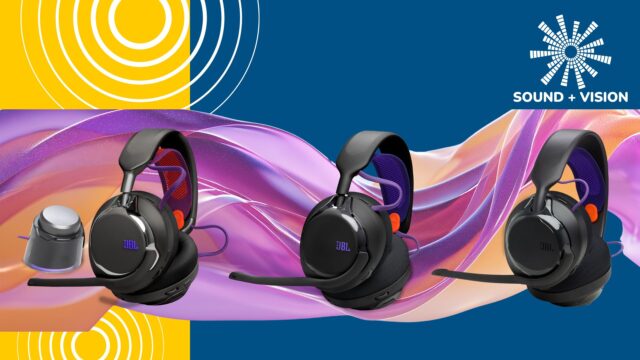For the first time, I went to what I guess can be considered as the mecca for gaming these days in Gamescom, although I wasn’t there to see the games but the gaming audio hardware that was there.
Primarily, it was JBL and the three new headsets that I saw – although weirdly enough there wasn’t really a chance to hear them – but in case you didn’t know, JBL launched three new models in its retooled Quantum gaming series in Quantum 950, 650, and 250 headphones. And all three have spatial audio support.
Spatial audio makes its way to gaming
This was alongside the announcement of Sony’s INZONE H9 II, which seems to be built around the core performance of the WH-1000XM6; and Beyerdynamic’s MMX 150 and MMX 230 headphones (I tested the MMX 200 when it launched).

It’s (mostly) moving away from the RGB lighting that gave the impression these peripherals were more children’s toys than hardcore gamers; to a stance where these headphones are “claimed” to give you the edge over other gamers, especially in the competitive forge of online multiplayer. Though if everyone has these headphones, then who has the edge?
Anyway, headphones such as these aren’t just boasting lower latency and more precise sense of detail within the game world; they’re also touting spatial audio support.
And this is where I become a little unsure about these headphones.
Unrealised potential? Or just not what we thought it’d be?
Spatial audio is, in my opinion, not a gimmick; but it hasn’t quite captured the imagination of the public at large. It feels very much a feature that brands would like you to think is very important and will change how you experience games, movies, music etc, but in reality it’s just… fine.
There are some very good Dolby Atmos music tracks but it all depends on how the track was mastered (or remastered), and some tracks don’t make for good bedfellows with spatial audio. There’s software from pretty much all the major audio brands that can upmix stereo to immersive, but none of what I’ve heard stands out to be better than just listening to the same track in stereo.
You’d think gaming would offer a better platform for immersive audio than music and movies, since you’re already within a 3D world with depth and sounds that come from in front, behind or to your sides.


I do remember playing one of the Resident Evil remakes with a Sony Inzone headset and finding it enjoyable (in a stressful way) but was it all that different from playing it in stereo, which itself already provides depth and incorporates sounds from around you? If anything, spatial audio lacks the detail and definition that you get from a stereo track.
Audio and gaming brands want you to be further immersed within the world you’re playing, but features such as head-tracking don’t feel as natural to creating that effect. It’s not as if I move my head about when I’m gaming – more or less I’m concentrated on what’s in front of me – so this idea of tracking sounds/keeping them in place while I move seems quite… unnecessary.
It’s not a gimmick, but if anything, it takes me out of the game world and makes me realise that there’s an additional layer of artifice that’s there. Some may not notice it and enjoy the aspect of immersion spatial audio provides, but me? I think I’ll be playing games with it off rather than turned on.










